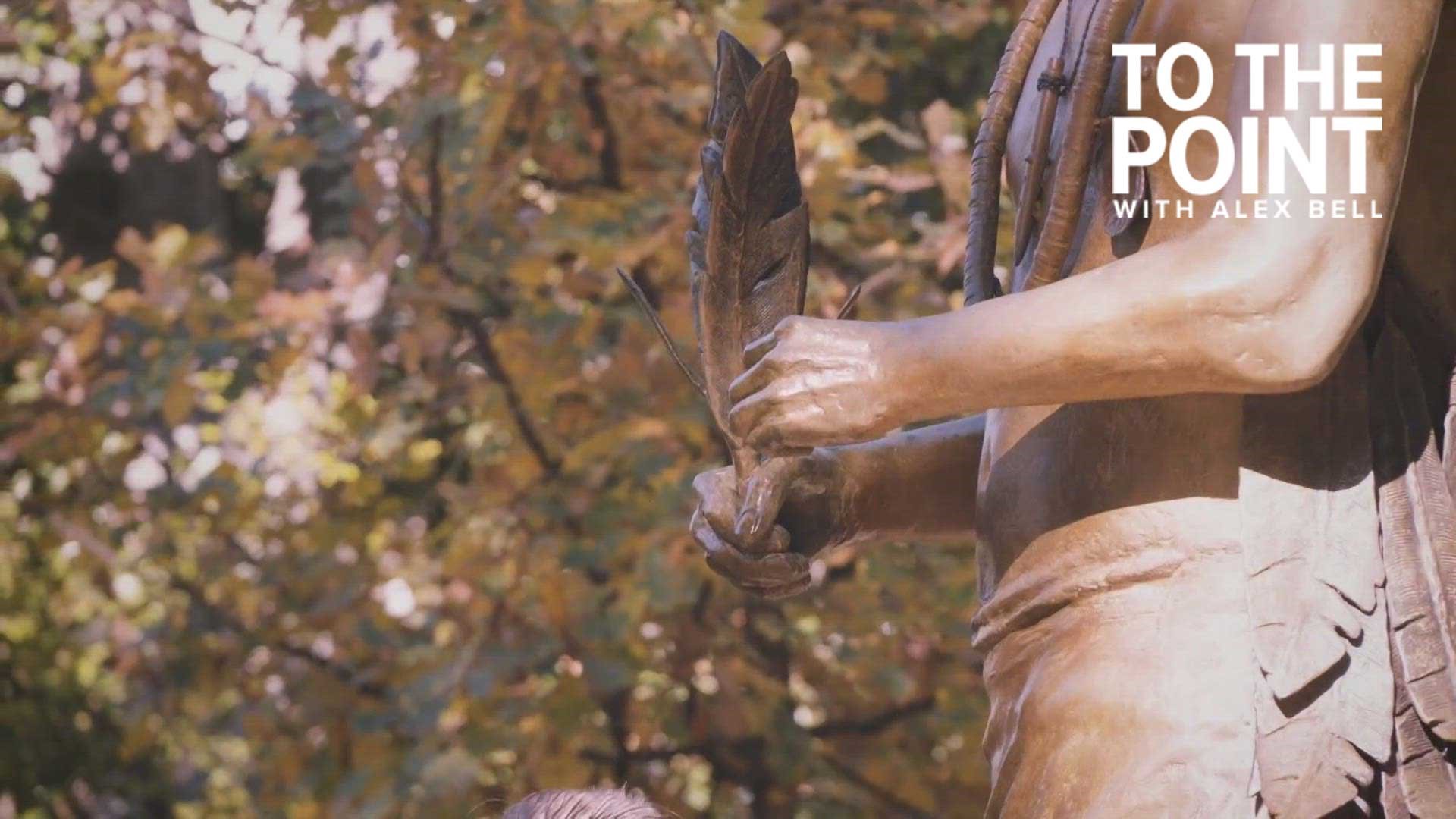SACRAMENTO, Calif. — For the first time, a monument honoring California Native Americans stands in Sacramento's Capitol Park. An unveiling and dedication ceremony was held Tuesday for the bronze sculpture of William "Bill" Franklin.
Jesus Tarango is the chairman of Wiltion Rancheria. It's the only federally recognized tribe in Sacramento County. He says Franklin was a Native American leader who dedicated his life to reviving traditional Miwok and Nisenan songs and dances.
"When you think about the contributions that our people have made to this great state, but not to be represented here, it's kind of hurtful," said Tarango. "It's significant for us because representation matters. Bill Franklin was my captain for our dance group and, as a child, he was our leader. He was a student, but most importantly he was an educator and because of the works of him, my people have their culture to carry on."
Franklin was a member of the Native American Heritage Commission and fought to restore Indigenous peoples' rights to human remains and cultural items. He also helped to build roundhouses in California for Native people to celebrate their traditions and culture.
Assemblymember James Ramos (D-San Bernardino) is the first and only California Native American serving in the state's legislature. He introduced Assembly Bill 338, now a law, to help create the monument.
"Now school-age children and even adults visiting the Capitol will be able to see a California Indian person and start to ask the question, 'what is the true history,' and now that opens it up for the Indian community to be able to share that with the state of California," said Ramos. "We're bringing to light the true injustice that has happened against California Indian people."
The new Native American monument replaces the statue of Father Junipero Serra that once stood on the grounds of the California State Capitol. Serra was a Spanish Franciscan priest and missionary. He came to the New World in 1749 to force Native people to convert to Christianity. Historians say the mission period overseen by Serra involved the enslavement and genocide of Indigenous people.
"A lot of people from Indian reservations, when we went to schools, we were forced to make and build missions, to learn about the missions and the Spanish exploration," explained Ramos. "But we were never able to tell the true story from the Indian perspective."
California targeted Native Americans beginning in the mid-19th century. Peter Burnett was elected California's first governor in 1849. He fueled the enslavement and genocide of Indigenous people in an attempt to create a whites-only American West.
John Sutter was a Swiss immigrant and came to California in 1839. He enslaved Indigenous people, children and others, forcing them to build Sutter's Fort in 1840 to economically support "pioneers."
Gold was discovered on Sutter's property in 1848, setting off the California Gold Rush. The flood of miners brought more violence and diseases. It's estimated that 150,000 Native people lived in California, but after the gold rush, the Native population dropped to about 30,000.
GET MORE RACE & CULTURE FROM ABC10:
►Explore the Race & Culture home page
►Watch Race & Culture videos on YouTube
►Subscribe to the Race and Culture newsletter
In 1848, Sutter transferred the land to his son, John Sutter, Jr. Historians say he worked with Burnett to establish the City of Sacramento at the continued expense of Indigenous peoples.
"It's that history that needs to be taught, so that other people can understand why Native people feel the way we feel," said Tarango.
California apologized to Native Americans for the "violence, maltreatment and neglect throughout the state's history" in 2019. The next year came with more action. The murder of George Floyd sparked protests against police brutality and systemic racism in cities across the country. Protesters advocated for the removal of statues and symbols tied to the exploitation of communities of color.
On June 15, 2020, the statue of John Sutter was removed in Sacramento's Midtown neighborhood. On July 4, protesters tore down the Junipero Serra statue in Capitol Park. Three days later, the statues of Christopher Columbus and Queen Isabella were taken out of the California State Capitol rotunda.
With the removal of statues also came the renaming of schools. Sacramento City Unified School District renamed Sutter Middle School to Miwok Middle School earlier this year. Peter Burnett Elementary is now Suy:u Elementary. Suy:u is the Miwok name for hawk.
"Find out about those people and then find out what are they being replaced with and the significance behind that," Tarango explained. "When we have the school name changes it at least gives me hope that people are wanting to have that conversation about what really took place then."
As California works to establish truth and healing, Ramos says it's important to understand the effects of historical trauma and the resilience of Native communities.
"It's about coming full circle and acknowledging a horrid past so that true, true, true healing can take place in the state of California."
We want to hear from you!
The Race and Culture team's mission is to serve our diverse communities through authentic representation, community engagement and equitable reporting. Accomplishing our goals of inclusive reporting requires hearing from you. Is there a person or place that you want us to highlight? Email us at raceandculture@abc10.com or fill out the form below.

